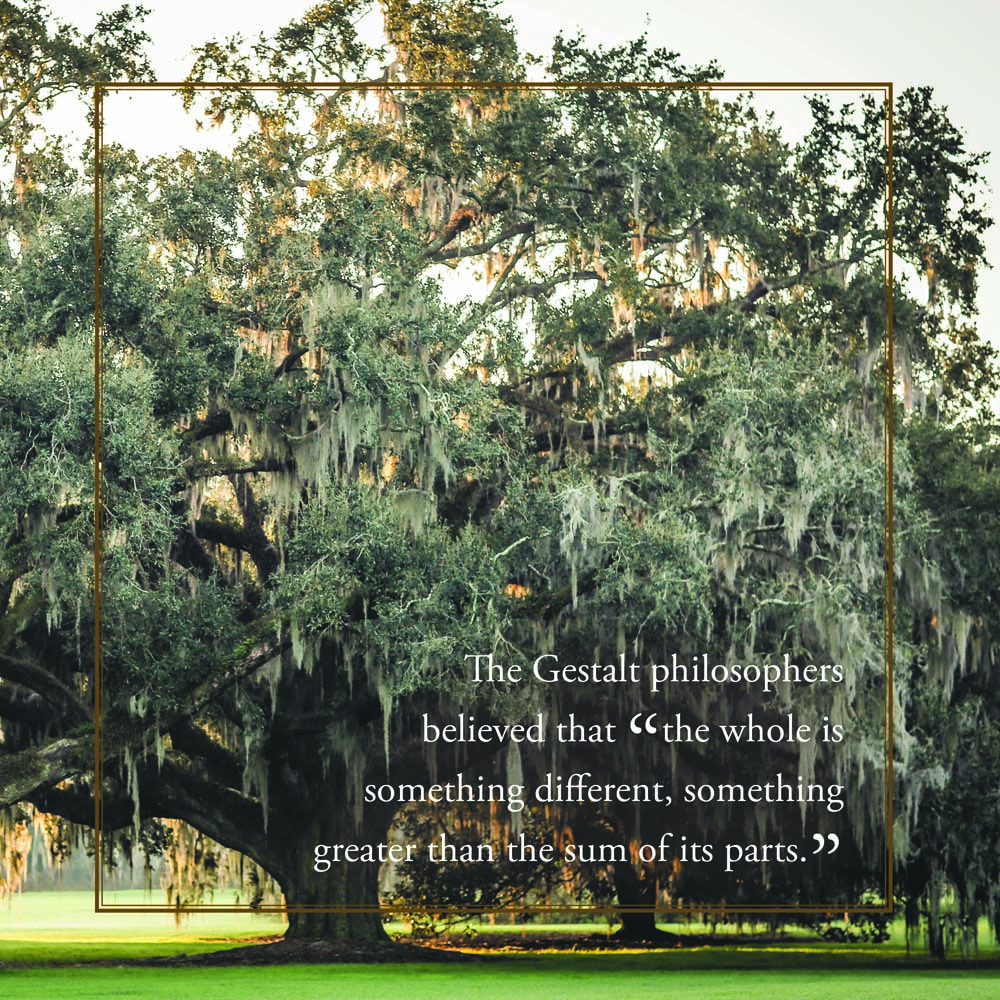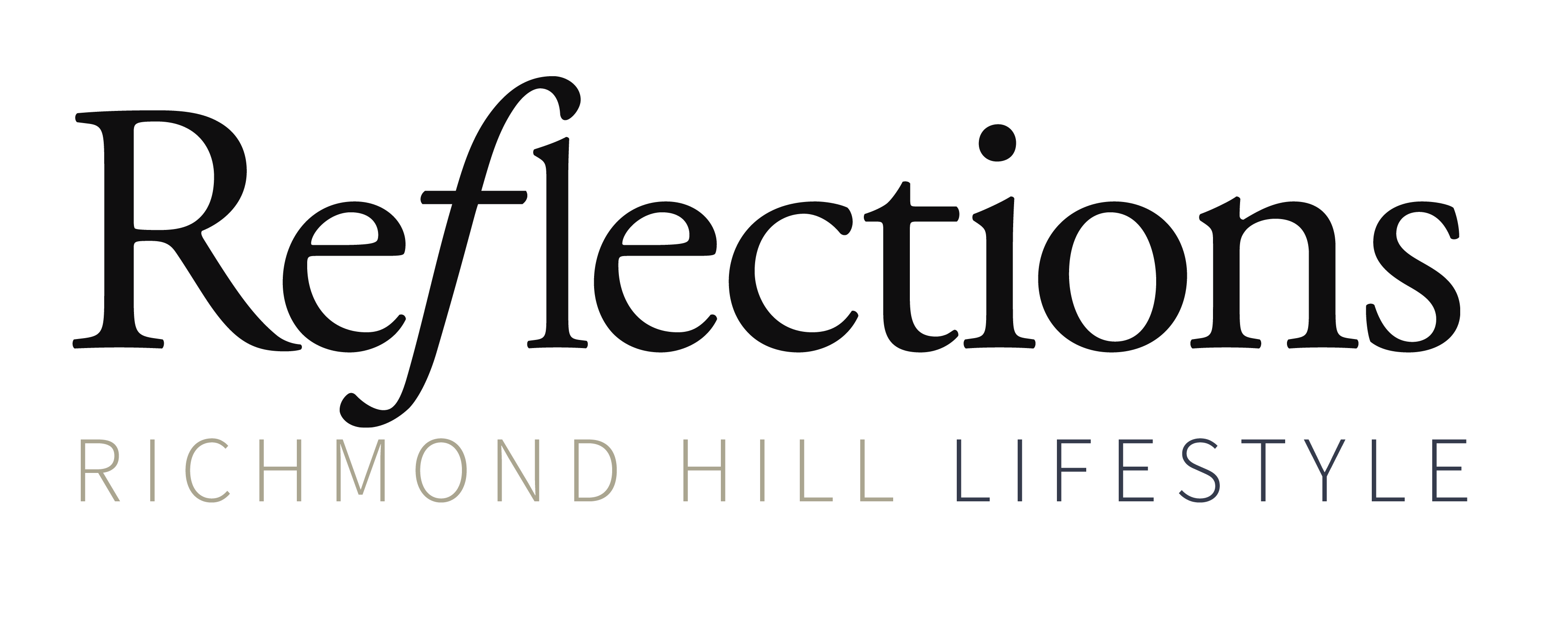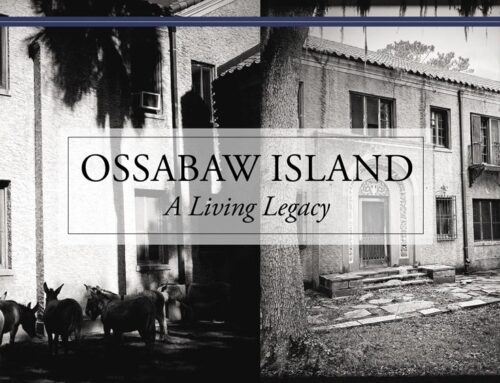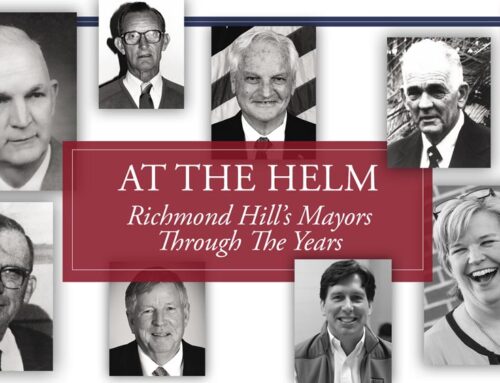
The Trail He Blazed
WORDS BY Paige Murphy Glazer
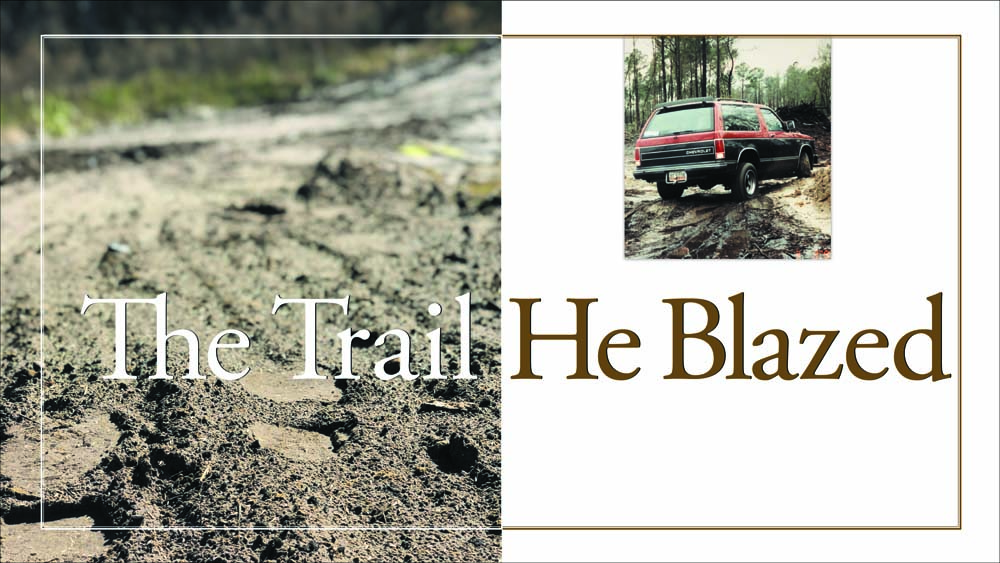
Gestalt.
His favorite word. He was so fond of it that one could almost consider this silly sounding word his mantra.
The Gestalt philosophers believed that “the whole is something different, something greater than the sum of its parts.” My dad explained it simply as “seeing around corners” or “being able to see a few steps ahead of your next move.” Maybe that’s why I could never beat him in chess. And why at every turn, he would write the word Gestalt on his legal pad, spin it around, and push it across the table towards me.
That word was always enough. It suggested not getting hung up on this, but to look at what’s coming next instead. The word would stop me in my tracks, often forcing me to consider if the problem or dilemma I was facing really mattered in the grand scheme of things. He was always suggesting Gestalt, as he believed the end result, finished project or solution to the problem at hand would be far greater, more exciting, and more memorable than whatever tiny piece was in front of you at the moment. He applied it to every aspect of his life.
I believe this is why he chose to keep battling his disease even when given the news that it occupied more of his body than not. His doctor called a Hail Mary, and he saw himself in the end zone receiving the throw of his lifetime. He had no quit.
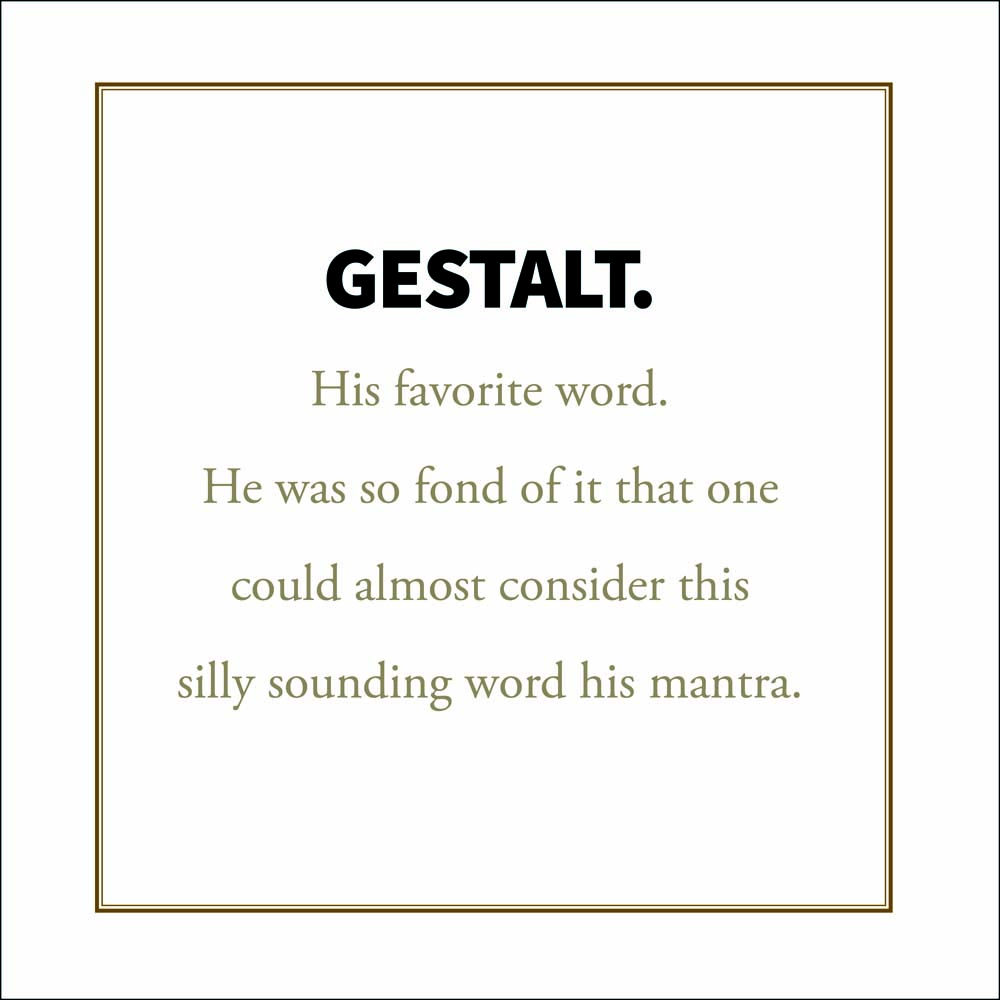
His Story.
In 1955, John Alfred Murphy arrived in Marietta, Georgia a determined individual. His family moved to Savannah, where Johnny grew up playing yard ball under the oak canopies surrounding his coastal home. After graduating from Savannah High School, he began working for CSX Railroad. In 1980, he met and married Leslie Curry, a southern girl, a teacher, and quite possibly a saint! Ever the dreamer and seeker of adventure, his desk job at the railroad left him quite discontent. Seeing more for himself, he began exploring opportunities. He and Leslie decided to get their real estate licenses. At the time, Johnny’s older sister Pat lived in the tiny bedroom community just South of Savannah— Richmond Hill. The mystique of the sparsely developed, beautiful, and heavily wooded peninsula was alluring. This is when Leslie says Johnny’s “love affair” with the community began.
It was 1983, Johnny and Leslie were expecting a baby (me). “We wanted to find property where we could begin our story,” Mama told me. “Your dad wanted the whole family to follow.” I’ve heard stories about being the 611th family to call Richmond Hill home my entire life. Until he passed, I never realized how uncharted the territory was. He was like a pioneer arriving here. Not even a blinking light was needed at “the Crossroads” of Highway 17 and 144. There were two small marinas, one on the Ogeechee at Fort McAllister, and one on the Lincoln River at Kilkenny, a whole 13 miles from the intersection. Small residential developments had begun to grow in pockets that dotted the edges of the peninsula. Their existence began as weekend fish camps until the fisherman began to appreciate the magic of living at “the coast” full-time. Not much for two twenty-something’s to navigate but, lucky for us, the magic captured them as well, and thus the story began.
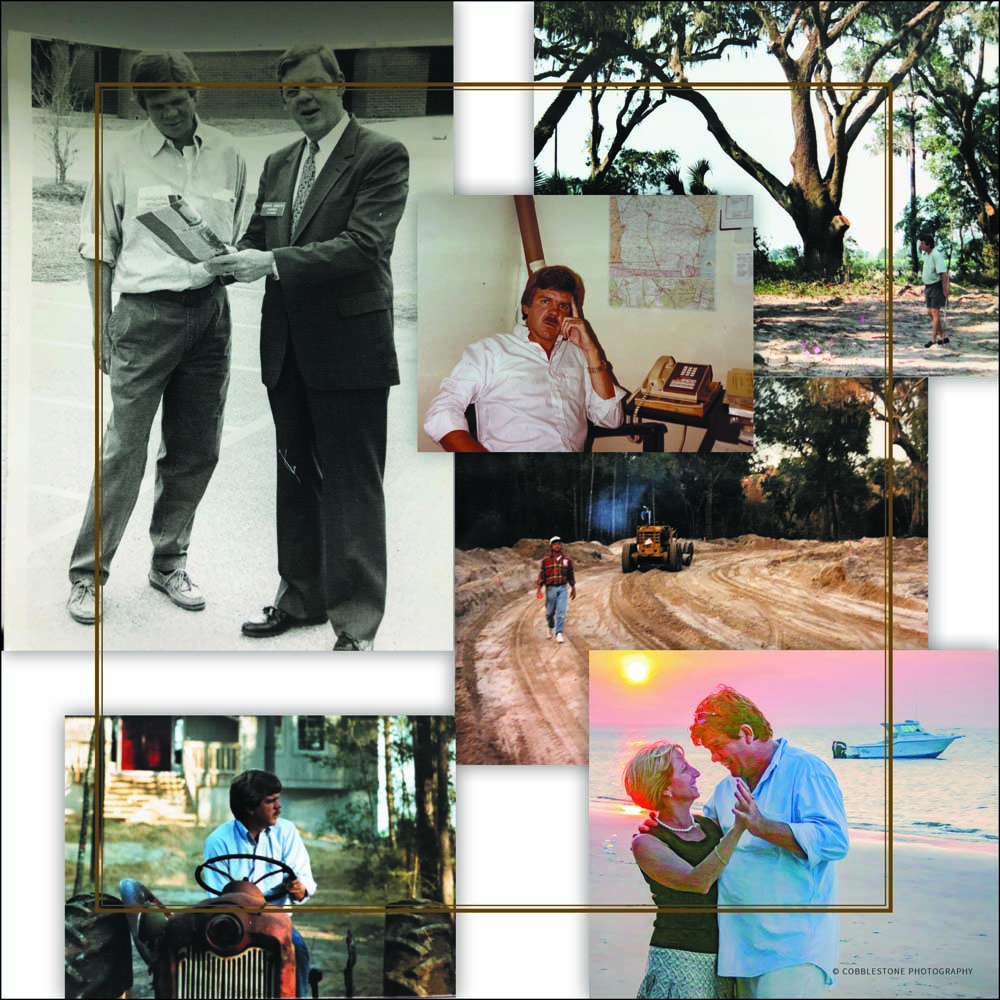
By happenstance, while exploring one day, my Dad met a man named Ralph Simmons at Miner’s Service Station. Ralph was the Vice President of Sales at Amelia Island Plantation. He belonged to a group of real estate investors from Fernandina, Florida, who had plans to develop The Bluff at Belle Island. As luck would have it, the group was looking for someone to market the subdivision and oversee its development. Richmond Hill Land Company was formed, and the entity purchased the old Ford-era home of Jack Gregory, currently the Planning and Zoning building on Richard Davis Drive. “We lived in the back of the office,” Mama reminds me of our first home.
Admiration.
“For Johnny, developing property was almost instinctive,” Mama says with a humble sense of pride. “He had the ability to look at a piece of land, understand its topography, navigate the wetlands, highlands, soils… the laws require certified engineers to draw plans for the layout of lots and infrastructure, but I think Johnny probably helped the engineers as much as they helped him. Land planning was a form of romance for Johnny and he was truly an artist. We always joked that I made art with paint and brushes; he made art with backhoes and dozers.”
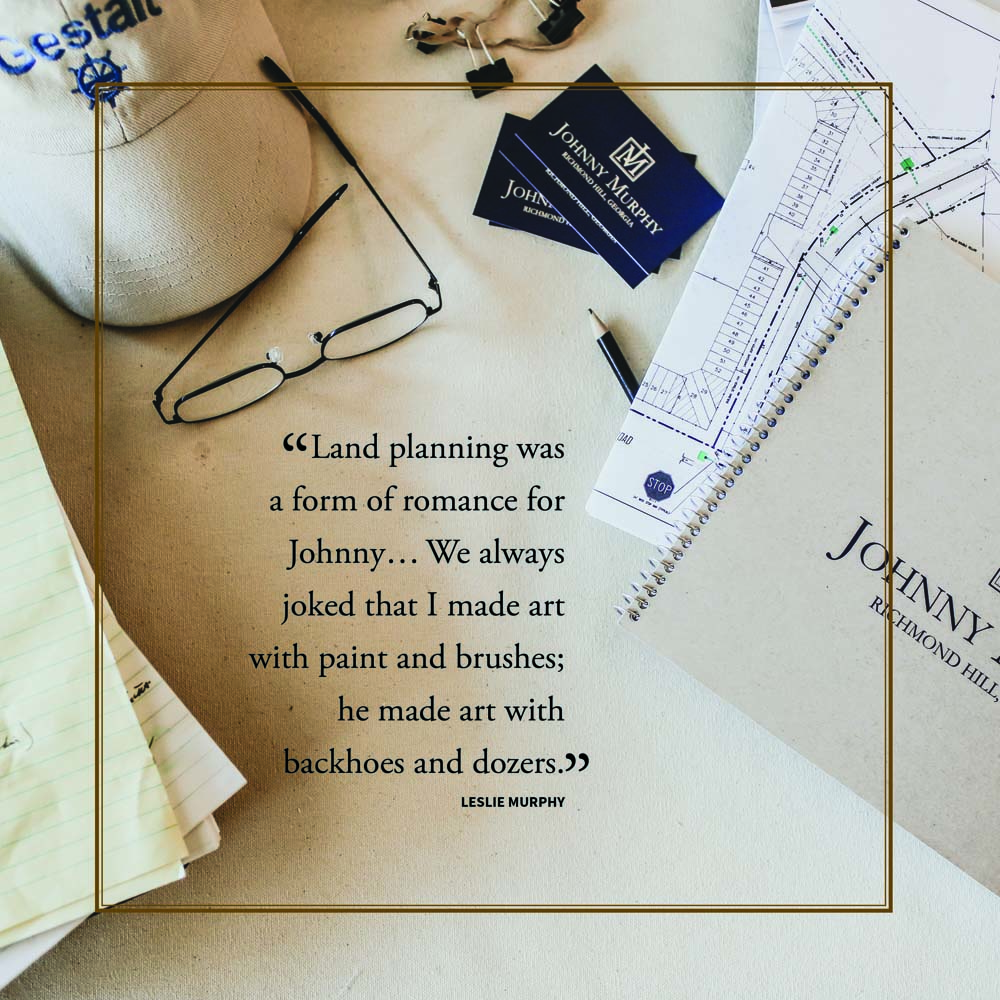
In the early Fall of 1983, Ralph Simmons introduced Johnny to his partners as the young man who wanted to move to Richmond Hill. He would be their boots on the ground and oversee the project. “He cut his teeth at Belle Island,” Mama laughs. “He learned from some of the greatest developers in recent history during the early days with that crew. And he built upon that knowledge— one discovery at a time.” Ralph’s introduction to the preservationist-type of development would always be at the core of my Dad’s intentions.
Charles Fraser, who is most widely known as the developer of Hilton Head Island, was an early mentor of Ralph Simmons’. Ralph had begun his real estate career at Hilton Head. I remember my Dad crediting Mr. Fraser’s vision as the one that he found the most inspiring. He admired the way Fraser’s style of development always found a way to work with the environment and not against it. “It was Earth-friendly development, and it became unique to our area for a long time,” Mama said. “The tree-hugging, green space saving, animal habitat preserving group of gentleman, who were extensions of the Fraser era, set a standard of excellence for my Johnny. And he never forgot it.”
My Mom describes his style simply: “Residential development in the scenic coastal areas meant using novel ideas for our local governing bodies at the time. Johnny’s art included minimal surface-level infrastructure: curbless streets with drainage swales and unobtrusive manholes with underground drainage to manage stormwater. He cleared homesites carefully to preserve as many trees as possible, all in the name of protecting the natural aesthetic appeal.”
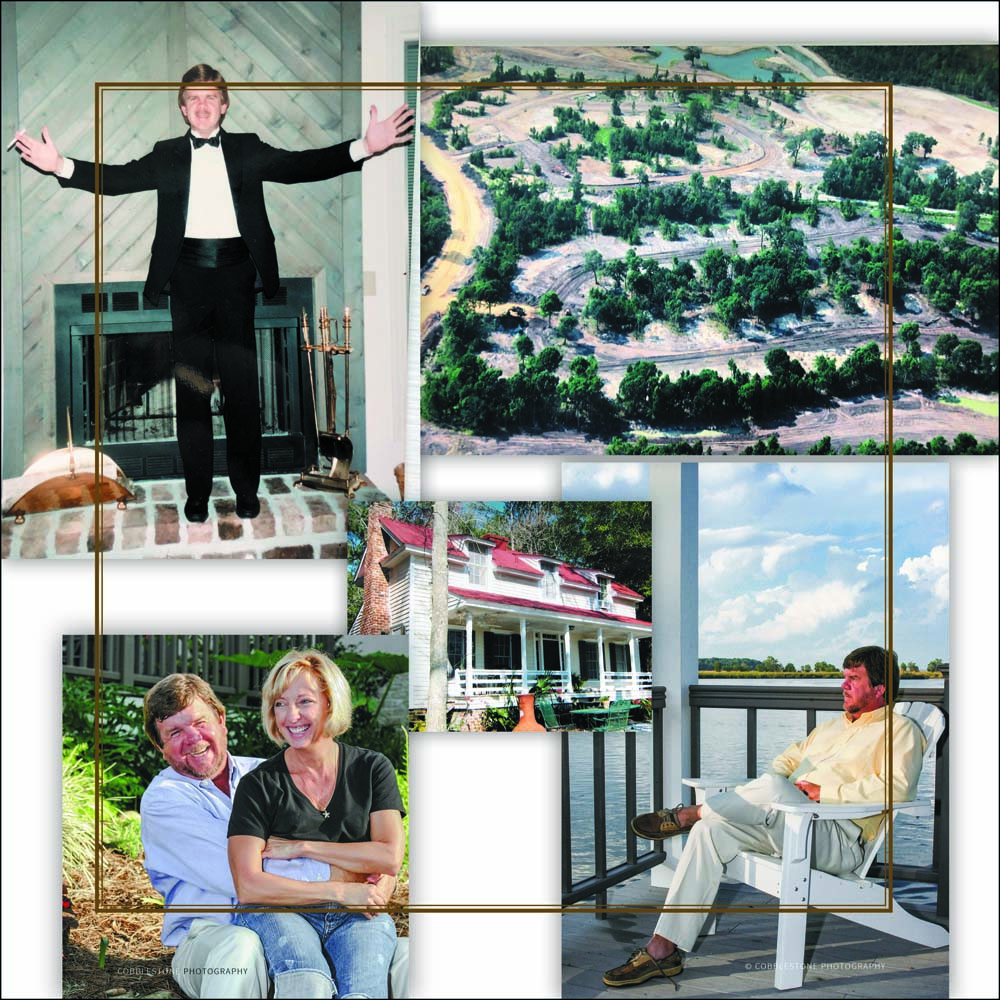
She recalled when Dad decided to call Charles Fraser. “Johnny told him how much he admired his South Carolina development and he really wanted to get Mr. Fraser’s thoughts on an upcoming project in Richmond Hill. Fraser invited him to come over for a chat, which excited Johnny to no end. During that little visit, Mr. Fraser offered to come tour this new project with Johnny.” Charles and his wife rode through the woods with Mom and Dad soon after. “He told us all about the days of developing Hilton Head. He taught us that a small human footprint in a world of natural beauty was the ultimate success. If you ever wonder why there are so many trees in most of our developments, it’s because of that ride through the woods before it became the Buckhead subdivision you know today. The animals were there first, you should protect their environment, and aim to live in harmony with them.” Inspirational, no doubt. “He was always ahead of his time. The clubhouse and amenities of Redbird Creek were a great example of his desire to create this ideal. A community pool, tennis courts, walking trails leading to foot bridges over a lagoon.”
Next Projects.
For the next thirty-six years, Johnny left tiny footprints all over the wooded peninsula of South Bryan, creating neighborhoods for all of us to call home: Belle Island, Tivoli Marsh, Redbird Creek, Oxford, Buckhead, Buckhead North, Richmond Hill Plantation, Buckhead East. As a child, I remember walking through those untouched woods and envisioning run-ins with spiders and snakes, or fearing we would never make it out of the mud hole in which he managed to get us stuck. But not my Dad. He was envisioning children riding bikes safely on trails made just for them. He could see the smiling faces of two hard-working lovebirds as they opened the door to their first home together. He could see the need for sidewalks connecting neighborhoods to schools, drainage ditches being cleared to function properly, and establishing parks so the beauty of raw earth could not only be remembered, but celebrated. He could see our community was on the horizon of extreme growth long before it arrived. That muddy spot where his red and black Blazer spun out was just a part of the whole. It’s called Gestalt, and he had it all along.
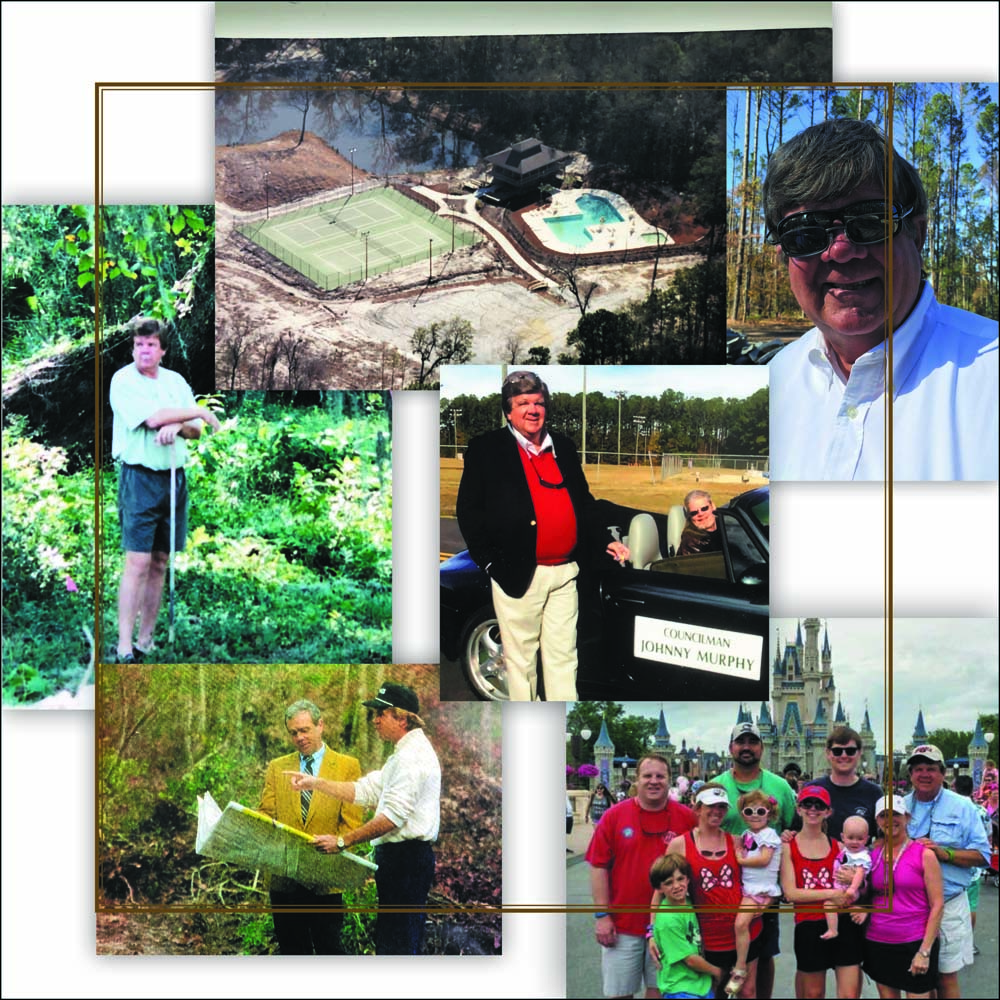
Leaving a legacy.
In 2013, Johnny was elected to City Council. He actually learned of the word Gestalt during the campaign. It encompassed everything he wanted people to understand. His thoughts, openly expressed to so many people, went something like this: “In order for us to have the wonderful, well-thought-out, and planned community we all want, you have to be able to examine all of the moving parts, the different layers and facets of human interaction and living. It doesn’t just happen. The parts first function separately before coming together to make things work.”
Sixty-three is young to die. But with the help of Gestalt and our faith in God, we know without a shadow of a doubt that Johnny Murphy is in Heaven. His good friend, attorney and confidant, Bill Glass, put it well: “… tonight, after we leave, [Johnny will] sit down with a glass of red wine and begin planning the next phase of heaven. And it will be beautiful with a park, lots of trees, and much better water and sewer improvements. And God’s planners will wonder how they did it without him.”
As I look at one of the last copies of his handwritten Gestalt, I can say that the parts of life that got him where he ended up were good, but the whole is so much better.
Farewell, Dad (Johnny, JM, Papa J)
